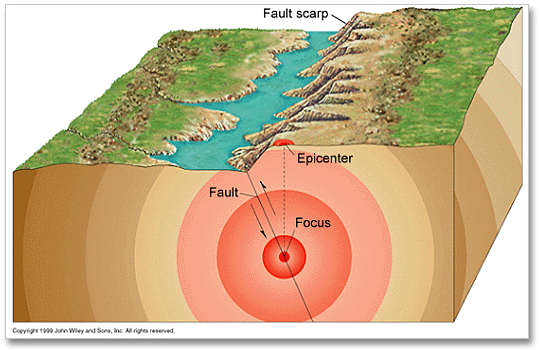Earthquake is the result of a sudden release of energy in the Earth's crust that creates Seismic waves. An earthquake is the sometimes violent shaking of the ground caused by movements of Earth's tectonic plates. Most earthquakes occur along fault lines, which is where two tectonic plates come together. In layman's term, the word Earthquake is used to describe any seismic event (whether natural or caused by humans) that generates seismic waves. Earthquakes are caused mostly by rupture of geological faults , but also by other events such as volcanic activity, landslides, mine blasts, and even nuclear test. An Earthquake's point of initial rupture is called its focus, or hypocenter. the epicenter is the point at ground level directly above the hypocenter.
At Earth's surface, Earthquakes manifest themselves by shaking and sometimes displacement of the ground. When the epicentre of a large Earthquake is located offshore, the seabed may be displaced sufficiently to cause a tsunami. Earthquakes can also trigger landslides and occasionally volcanic activity.
Earthquakes strike suddenly and violently and can occur at any time, day or night, throughout the year. Smaller earthquakes might crack some windows and shake products off store shelves, but larger earthquakes can cause death and massive destruction, devastating communities and debilitating local economies.













